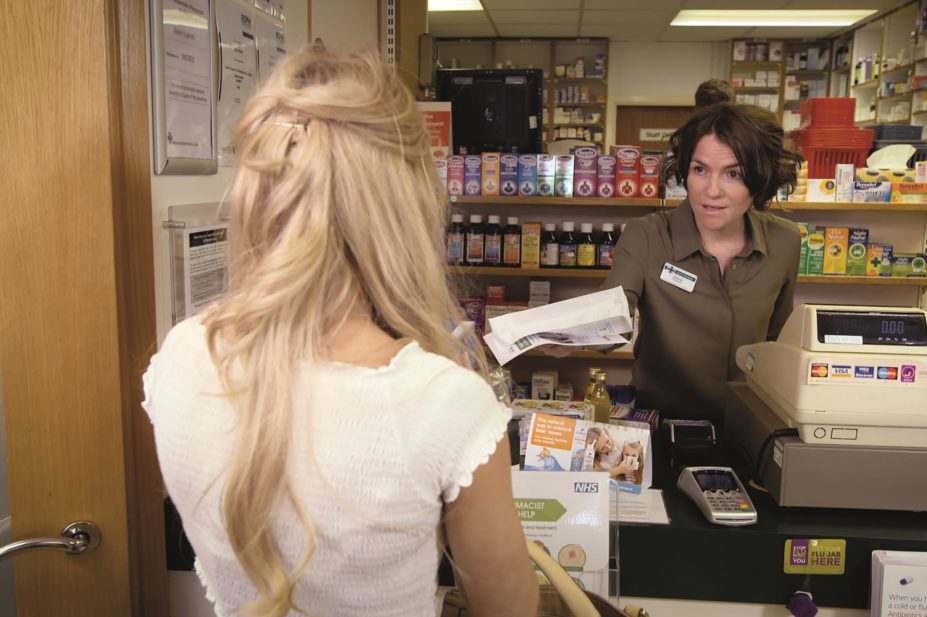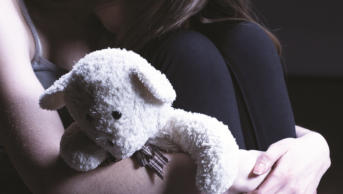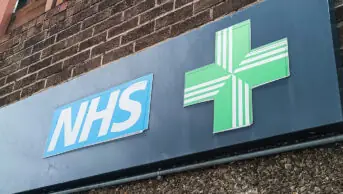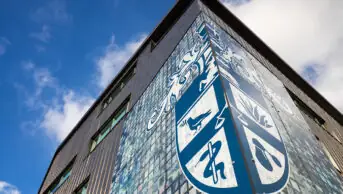
Liptrots Calverley Ltd / Health Education England
Child sexual exploitation (CSE) is one of the key safeguarding issues that can affect any child or young person irrespective of their age, ethnicity, religious beliefs or social background. A number of recent high profile court cases and serious case reviews have highlighted what has previously been largely hidden and rarely acknowledged[1],[2],[3]
, while also raising the role health services can play in its identification and treatment.
CSE is an important health issue and is considered a form of child abuse. This difficult and emotive subject is a national priority for all healthcare professionals and agencies, and a number of influential reports highlight the role of the health services in identifying children at risk of, or experiencing sexual exploitation[2],[4],[5],[6],[7],[8]
. These publications are relevant for all healthcare professionals, irrespective of whether they work at a national, regional or local level, or whether they are involved in the planning, commissioning or provision of health services.
Pharmacists need to be aware of CSE and its impact on health so that they can identify signs and indicators of possible CSE in the children and young people they will work with or come into contact with. Pharmacists in all sectors should be aware of their responsibilities and will need to work with colleagues from other disciplines and agencies to provide appropriate care in order to support those children and young people at risk of, or affected by, sexual exploitation.
What is CSE?
CSE is a form of child sexual abuse where children are sexually exploited for money, power or status. It can involve violent, humiliating and degrading sexual assaults. In some cases, young people are persuaded or forced into exchanging sexual activity for money, drugs, gifts, affection or status. Consent cannot be given, even where a child may believe they are voluntarily engaging in sexual activity with the person who is exploiting them. CSE doesn’t always involve physical contact and it can happen online[9]
.
Perpetrators are not only adult men; they can be women and other children or young people. Power is developed over the child or young person through threats, bribes, violence and humiliation or by telling the child or young person that he or she is loved by the exploiter. This power is then used to induce the child or young person to take part in sexual activity.
Exploitative relationships are built on the child or young person’s social, economic or emotional vulnerability. Children and young people cannot consent to their own abuse: so a child or young person at risk of sexual exploitation is a child or young person at risk of significant harm and they must be safeguarded[10]
.
A child or young person’s awareness of exploitation is reduced or lost when they receive something (e.g., food, accommodation, drugs, alcohol, cigarettes, affection, gifts, money) in return for performing, or being used for, sexual activities.
Official statistics on how many sexually exploited children have been identified by the authorities are not available. Although there has been a lot of research into the factors associated with CSE, very few studies examine the numbers of children who have been exploited[11]
, as many children and young people may not recognise the relationship as abusive and that they are being exploited. This means that children and young people are unlikely to report the abuse.
While the Children’s Commissioner’s inquiry estimated that at least 16,500 children in England were at risk of CSE during the period April 2010 to March 2011[12]
, it is thought that the numbers of children and young people at risk and being sexually exploited is actually much higher.
Signs of possible CSE
It is essential that pharmacists are aware of the signs of CSE to ensure that they can seek the appropriate help and support to protect the child or young person. Many children and young people will present with a range of symptoms or indicators of potential CSE, which can be both physical and psychological. These can include:
- Self-harm/attempted suicide;
- Unexplained change in appearance and/or behaviour (e.g., angry, upset, unwashed or new clothes);
- Repeated testing for sexually transmitted diseases or pregnancy;
- Repeated symptoms of urinary infections;
- Repeated pregnancies, miscarriages, terminations, or requests for emergency contraception;
- Repeated or prolonged alcohol abuse;
- Drug/substance misuse;
- Unexplained injuries (e.g., bruising, cuts, ligature marks);
- Eating disorders;
- Suicidal thoughts or ideation;
- Multiple personality disorders.
Children who have been sexually abused experience depression, post-traumatic stress disorder, disturbed behaviour, or a combination of these[6]
. Around 85% of the children interviewed by the Children’s Commissioner Inquiry[12]
reported they had either self-harmed or attempted suicide as a result of sexual exploitation.
Video:
Spotting the signs of child sexual exploitation
Role of pharmacists
The specific responsibilities of all health services and professionals who are in a unique position to recognise and assist children and young people who are being sexually exploited are highlighted in a number of publications[5],[6],[7],[8]
.
Children and young people affected by sexual exploitation can present to a wide range of health settings, including community pharmacies, with a range of physical and/or emotional problems. In particular, pharmacists should:
- Understand their role in identifying children and young people at risk of/experiencing CSE;
- Be able to identify the risks, warning signs and indicators of CSE;
- Communicate and engage with children and young people to develop trust as this may support them to discuss issues with you;
- Know and understand their organisational and multi-agency safeguarding arrangements and processes and who to contact when they are concerned about a child or young person;
- Know how to contact their lead safeguarding professional for advice and support;
- Share information with and make referrals as appropriate to other agencies (e.g., police and children’s social care).
Safeguarding the child or young person must be the first priority, as all children and young people have the right to be safe and protected from harm. For all healthcare staff, regardless of their role, safeguarding children and young people is everyone’s responsibility.
To fulfil these responsibilities, all pharmacists should have access to appropriate single-agency safeguarding training and multi-agency training, which is offered by local safeguarding children’s boards. The intercollegiate safeguarding training competencies[13]
provides a clear framework for this.
Health Education England have produced a training video that, whilst not fully reflecting expected good practice, provides advice on identifying the signs of CSE in vulnerable young people, discusses the issues and reflects on the role and actions of the community pharmacist[14]
.
Information sharing
When there is a suspicion that a child or young person is being exploited, this should be shared with other appropriate agencies, even where there may be issues with consent[15]
. Sharing information can mean the difference between life and death for a child or young person. The effective identification, disruption, intervention, protection and prosecution of perpetrators of this crime depend on effective multi-agency working. Sharing small clues, such as unofficial places where children and young people might gather, can have a big impact on the disruption and prevention of criminal activity. Further support regarding the sharing information can be obtained by contacting local Named and Designated Safeguarding Professionals or by accessing the information sharing guide[16]
.
Points to remember
- CSE can affect any child or young person;
- Children and young people cannot consent to their own abuse;
- Safeguarding children and young people is everyone’s responsibility;
- Share information – no matter how trivial you think it may be;
- Perpetrators can be women as well as men;
- Exploited children and young people may refuse help but they still need to be safeguarded.
Useful resources
- National Society for the Prevention of Cruelty to Children (NSPCC)
- www.nspcc.org.uk
- Telephone: 0808 800 5000
- Barnardo’s
- The Children’s Society
- Childline
- www.childline.org.uk
- Telephone: 0800 11 11
- Child exploitation and on-line protection centre (CEOP)
- NWG network (formerly The National Working Group for Sexually Exploited Children and Young People)
- Missing Children helpline
- www.missingpeople.org.uk
- Telephone: 116 000
- Parents against child sexual exploitation
- www.paceuk.info
- Telephone: 0113 240 5226
Lisa Cooper is deputy director quality and safeguarding/regional lead, safeguarding, NHS England North and chair of the NHS England national child sexual exploitation sub-group.
Reading this article counts towards your CPD
You can use the following forms to record your learning and action points from this article from Pharmaceutical Journal Publications.
Your CPD module results are stored against your account here at The Pharmaceutical Journal. You must be registered and logged into the site to do this. To review your module results, go to the ‘My Account’ tab and then ‘My CPD’.
Any training, learning or development activities that you undertake for CPD can also be recorded as evidence as part of your RPS Faculty practice-based portfolio when preparing for Faculty membership. To start your RPS Faculty journey today, access the portfolio and tools at www.rpharms.com/Faculty
If your learning was planned in advance, please click:
If your learning was spontaneous, please click:
References
[1] Bedford A. Serious case review into child sexual exploitation in Oxfordshire: from the experiences of children A, B, C, D, E, and F. Oxford Safeguarding Children’s Board (2015). Available at: http://www.oscb.org.uk/wp-content/uploads/SCR-into-CSE-in-Oxfordshire-FINAL-FOR-WEBSITE.pdf (accessed June 2016).
[2] Jay A. Independent inquiry into child sexual exploitation in Rotherham: 1997 – 2013 (2014). Available at: http://www.rotherham.gov.uk/downloads/file/1407/independent_inquiry_cse_in_rotherham (accessed June 2016).
[3] Griffiths S. The overview report of the serious case review in respect of young people 1,2,3,4,5 & 6. Rochdale Local Safeguarding Children’s Board (2013). Available at: https://library.nspcc.org.uk/HeritageScripts/Hapi.dll/search2?searchTerm0=C4921&_ga=1.247770567.1124593834.1452081420 (accessed June 2016).
[4] Jago S, Arocha L, Brodie I et al. What’s going on to safeguard children and young people from sexual exploitation? How local partnerships respond to child sexual exploitation (2011). University of Bedfordshire. Available at: http://www.beds.ac.uk/__data/assets/pdf_file/0004/121873/wgoreport2011-121011.pdf (accessed June 2016).
[5] The Academy of Medical Royal Colleges. Child sexual exploitation improving recognition and response in health settings (2014). Available at: http://www.aomrc.org.uk/general-news/child-sexual-exploitation.html (accessed June 2016).
[6] Department of Health. Health working group report on child sexual exploitation (2014). Available at: https://www.gov.uk/government/publications/health-working-group-report-on-child-sexual-exploitation (accessed June 2016).
[7] Department of Health. Health working group report on child sexual exploitation: response to the recommendations (2014). Available at: https://www.gov.uk/government/publications/health-working-group-report-on-child-sexual-exploitation (accessed June 2016).
[8] Department of Health & Public Health England. Helping school nurses to tackle child sexual exploitation (2015). Available at: https://www.gov.uk/government/publications/helping-school-nurses-to-tackle-child-sexual-exploitation (accessed June 2016).
[9] HM Government. What to do if you’re worried a child is being abused: advice for practitioners (2015). Available at: https://www.gov.uk/government/uploads/system/uploads/attachment_data/file/419604/What_to_do_if_you_re_worried_a_child_is_being_abused.pdf (accessed June 2016).
[10] HM Government. Working together to safeguard children. A guide to interagency working to safeguard and promote the welfare of children (2015). Available at: https://www.gov.uk/government/uploads/system/uploads/attachment_data/file/419595/Working_Together_to_Safeguard_Children.pdf (accessed June 2016).
[11] NSPCC. Child sexual exploitation (2016). Available at: https://www.nspcc.org.uk/preventing-abuse/child-abuse-and-neglect/child-sexual-exploitation/ (accessed June 2016).
[12] Berelowitz S. “ If only someone had listened.” The Office of the Children’s Commissioner’s inquiry into child sexual exploitation in gangs and groups final report (2013). London: Office of the Children’s Commissioner. Available at: http://www.childrenscommissioner.gov.uk/info/csegg1 (accessed June 2016).
[13] Royal College of Paediatrics and Child Health. Safeguarding children and young people: roles and competences for health care staff (2014). Available at: http://www.rcpch.ac.uk/sites/default/files/page/Safeguarding%20Children%20-%20Roles%20and%20Competences%20for%20Healthcare%20Staff%20%2002%200%20%20%20%20(3)_0.pdf (accessed June 2016).
[14] Health Education England. Spotting the signs of child sexual exploitation (2016). Available at: https://hee.nhs.uk/our-work/developing-our-workforce/spotting-signs-child-sexual-exploitation (accessed June 2016).
[15] Department of Health. Information sharing letter regarding child sexual exploitation (2015). Available at: https://www.gov.uk/government/uploads/system/uploads/attachment_data/file/408843/info_sharing_letterv5.pdf (accessed June 2016).
[16] Department for Education. Information sharing: advice for practitioners providing safeguarding services to children, young people, parents and carers (2015). Available at: www.gov.uk/government/publications/safeguarding-practitioners-information-sharing-advice (accessed June 2016).


